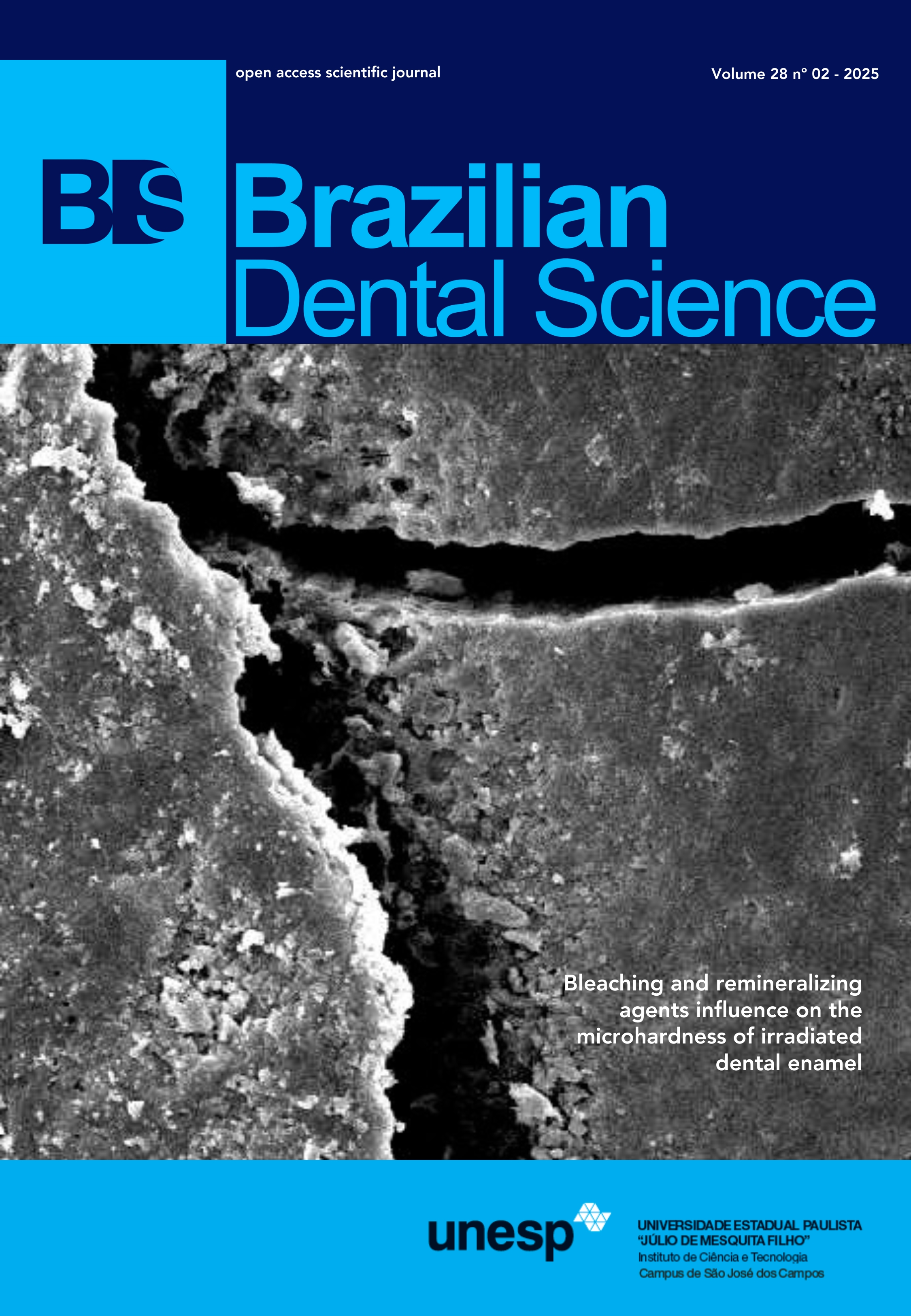Multi-peak light sources can improve the physical and mechanical properties of a zirconia- and diatomite-based dental resin: an in vitro study
DOI:
https://doi.org/10.4322/bds.2025.e4750Resumo
Objective: This study aimed to evaluate the physicomechanical properties of three resin composites—Zirconfill (Maquira), Applic (Maquira), and Opallis (FGM)—photoactivated with single-peak (Demi Plus; Kerr) and multipeak (Valo Cordless Grand; Ultradent; Bluephase N G4; Ivoclar Vivadent) light-curing units. The resins differed in filler composition: Applic contains micronized barium-alumino-silicate glass and nanometric silica; Opallis includes silanized barium-alumino-silicate glass and silicon dioxide nanoparticles; and Zirconfill incorporates diatomite, silica, and zirconium mixed oxide. Material and Methods: A total of 270 specimens were prepared to evaluate the degree of conversion (DC), flexural strength (FS), elastic modulus (ME), water sorption (SOR), and solubility (SOL). Morphological and compositional characterization was performed using scanning electron microscopy (SEM) and energy-dispersive spectroscopy (EDS). Data were analyzed using two-way ANOVA followed by Tukey’s post hoc test (5%), after verification of normality (Shapiro-Wilk test). Results: Zirconfill, when photoactivated with the Bluephase unit, exhibited the highest FS and ME values and the lowest SOR and SOL rates, highlighting the potential of innovative fillers to enhance restoration durability. Although Opallis showed high DC values across all groups, its mechanical properties were inferior. Conclusion: It can be concluded that the resin composition and the selection of a light-curing unit with a spectrum and power compatible with the composite’s photoinitiator system are essential to optimize the clinical performance and longevity of resin-based restorations.
KEYWORDS
Composite resins; Curing lights dental; Dental materials; Flexural strength; FTIR.
Downloads
Downloads
Publicado
Como Citar
Edição
Seção
Licença
Copyright (c) 2025 Brazilian Dental Science

Este trabalho está licenciado sob uma licença Creative Commons Attribution 4.0 International License.
TRANSFERÊNCIA DE DIREITOS AUTORAIS E DECLARAÇÃO DE RESPONSABILIDADE
Toda a propriedade de direitos autorais do artigo "____________________________________________________________________" é transferido do autor(es) para a CIÊNCIA ODONTOLÓGICA BRASILEIRA, no caso do trabalho ser publicado. O artigo não foi publicado em outro lugar e não foi submetido simultaneamente para publicação em outra revista.
Vimos por meio deste, atestar que trabalho é original e não apresenta dados manipulados, fraude ou plágio. Fizemos contribuição científica significativa para o estudo e estamos cientes dos dados apresentados e de acordo com a versão final do artigo. Assumimos total responsabilidade pelos aspectos éticos do estudo.
Este texto deve ser impresso e assinado por todos os autores. A versão digitalizada deverá ser apresentada como arquivo suplementar durante o processo de submissão.




























